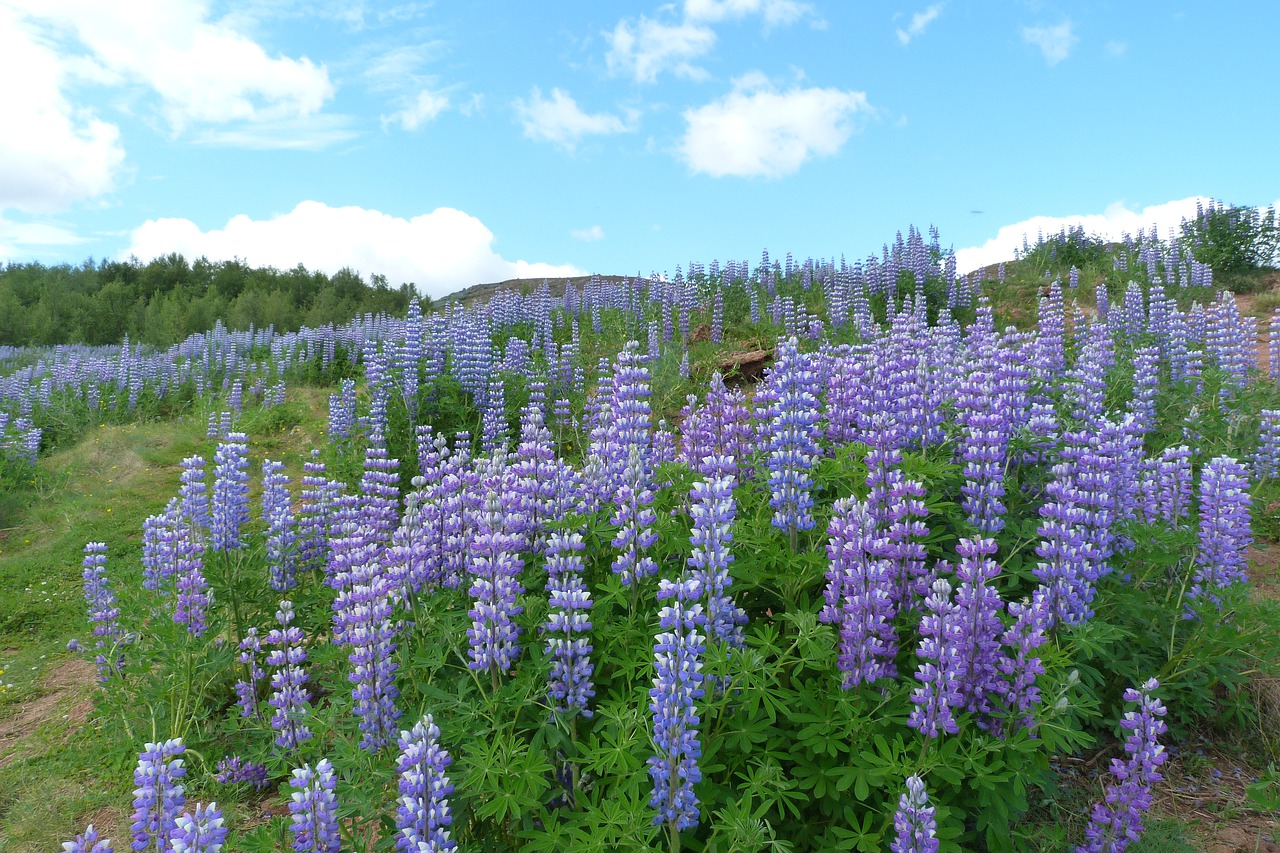Last Updated on February 15, 2022 by Real Men Sow
Lupins are perennial shrubs that start into growth after the last frosts, produce their first flush of flowers in late May / June and can continue flowering into early August if dead-headed correctly. Planting lupins can become very rewarding because the flowers are large in almost every possible colour. When grown lupins from seed they are an extremely cheap and reliable plant for the cottage or ornamental garden. Make sure you keep the following as a guide to see if it would suit growing in your garden and if you want to grow them:

Short Summary on Planting Lupins
- Most comfortable in neutral to slightly acidic soils but will tolerate all soils, even those low in nutrients. However, they won’t grow well in clay soils.
- Like well-drained, moist soil. However, they can be grown in any garden. They don’t like to be waterlogged because that can lead to crown rot.
- Prefers full sun, but can also be grown in light shade.
- Can reach heights of up to 1m-2m depending on the soil and weather conditions. They can support themselves even in windy conditions, and don’t require staking.
- Looks great as either a group of five or more or interspersed in a mixed flowering garden.
- Lupins can be very vulnerable to aphids, especially Giant Lupin aphids.
- Loved by snails and slugs, especially young plants.
- Healthy plants that suffer from very few illnesses. They can be grown without any special knowledge.
- Can withstand cold and frost extremely well, and will overwinter anywhere in the UK.
Growing Lupins from Seed or Plant
A pack of 40 Lupin seeds will yield excellent plants in a range of colours. The seeds should be sown indoors in February or April. Some may flower the first year while others may not.
Only lupins that are grown from cuttings will be exact copies of their parent plants. You can get them in either a plug plant or a pot plant. However, they are more expensive than seed but you will always have the exact colour and variety you want.
Planting Lupin from Seed
It is usually the same process to sow either saved seed or packets purchased from garden centres. You can sow your seeds indoors for the best results, but you can also plant them outside in pots a month later. Around the first week in March is the best time to sow Lupin seeds indoors.
Soak the seeds in water for at least one day before you sow. This will help to hydrate the seeds, which will result in faster germination.
Seed can be sow in seed modules, then transplanted into 8cm/3in pots once the seedlings have at least four true leaves. This is usually two to three weeks after sowing. You can also sow a few seeds directly in 8cm/3in pots. Sprinkle fine compost over the top of the seed, about 1 cm deep. You can use normal multi-purpose compost. Water the compost immediately after sowing.
The seedlings should be ready to go in 10 to 15 days. Keep them in a cool, sunny place until they emerge. You can place them on a windowsill, but not in direct sunlight. The last week of April is the best time to harden the plants. After a few weeks, they are ready for planting outside.
Plant Lupin from Plug Plants
Even though they are more expensive than seeds, plug plants can still be cheaper than larger plants in 8cm/3in pots. The plug plants should be purchased in the late March/early April. They will then need to be potted up into 8cm/3in pots within a few weeks. Once you can see the roots at bottom of the pot, harden the plants as described above.
Planting Lupins
Although they prefer full sun, lupins can also thrive in semi-shade but they do not like full shade. Although they can grow in all soil types, they will struggle to thrive in clay or wet soil. They will survive wet winters if the soil is clay.
Lupins can grow up to 150cm (5ft) in height, but they are strong even when exposed to windy and harsh conditions. Lupins can grow in any part of the UK or Ireland and will tolerate frosts as low as -25°C.
It is easy to plant lupins. Simply dig the area where you want them to be planted, then sprinkle some blood, fish, and bone on top and work it into the soil. Each plant should be placed in a hole. The crowns of lupins can rot if they are too deep. If they are too shallow, they might not establish well. Make sure to water well. Each lupin should have a planting distance of 30cm to 45cm (12in-18in).
Taking Care of Lupins
Watering
Lupins are perennial plants that grow strong and are capable of taking care of themselves in terms of both water and nutrients. When established, they have long taproots that allow the roots to find water even in extreme drought. Manual watering can lead to crowns becoming rotten.
Feeding
Roots can also produce their own nutrients. They have nodes that produce their own nitrogen. After their first feed, don’t give lupins any nitrogen-based fertilizers. This will encourage lush green growth and make them more susceptible to aphid attacks.
Removing or Deadheading Flowers
Cut off flower heads after they have fallen to the ground in order to get the longest period of flowering from your Lupins. The flower heads will eventually die, and the time to remove the dead flower heads is when the top third of the flower has fallen. The flowering season will be extended by the appearance of smaller, new flowers.
Overwinter Care
There is no need for you to do anything when the leaves start to turn brown in winter. The foliage will gradually die back, and it does not cause any damage. Clear away all dead foliage in early spring to ensure good airflow at ground level.
Although lupins can live up to 10 years, it all depends on where they are planted. They will generally produce good flowers for five years before they become unproductive and woody. It is worth digging them up, dividing them, and replanting. Their tap roots may be damaged but they can recover and continue to produce decent flowers for four to five more years.
Common Pests and Diseases Affecting Lupins
Aphids
These pests are known to attack lupins, and they can be very destructive for organic gardeners. The Giant Lupin Aphid can attack your plant, and if they are left alone, the result will be poor plants and foliage that is susceptible to further attacks by fungi.
Spray the lupins with an insecticide systemic at the first sign of aphids, which is usually May. Two weeks later, spray the plant again with a systemic insecticide. Spraying with organic insecticide soap won’t stop aphids attacking your lupins.
Crown Rot
Sometimes the plant’s base can rot. This is usually caused by excess moisture. You may be able to get rid of the rotted plants by spacing the rest out a little more.
Color of Plant Changing
Lupins are the same color year after year. They do not change. If you notice a change of colour year after year, it’s because your plants have self-sown (they are very skilled at this). Self-seeded plants will most likely revert to a lighter shade each year.
It is possible to stop the plants from self-seeding. You can do this by removing the seeds from flowers before they drop to the ground.
Lupins Grown in Containers
Growing lupins indoors is difficult because they are 150cm tall, making them heavy. Pots that are at least 60cm in diameter (or 2ft) are recommended. This is combined with the fact that they need long tap roots to ensure successful growth, and you will need a large and deep pot. Remember that it will be difficult to move by just one person.
A pot with a drainage hole at the bottom and a size suitable for your plants is possible. The soil should be free-draining, two thirds multi-purpose, one third sharp grit. The plants will not have any special requirements compared to other pot plant species.
They will need to be watered frequently, and rainwater is better than tap water because they prefer slightly acidic conditions. A fortnightly application from April through June of liquid tomato food is the best way to feed your plants. It is best to let the foliage fall in winter, then remove it in spring, when new shoots emerge.

